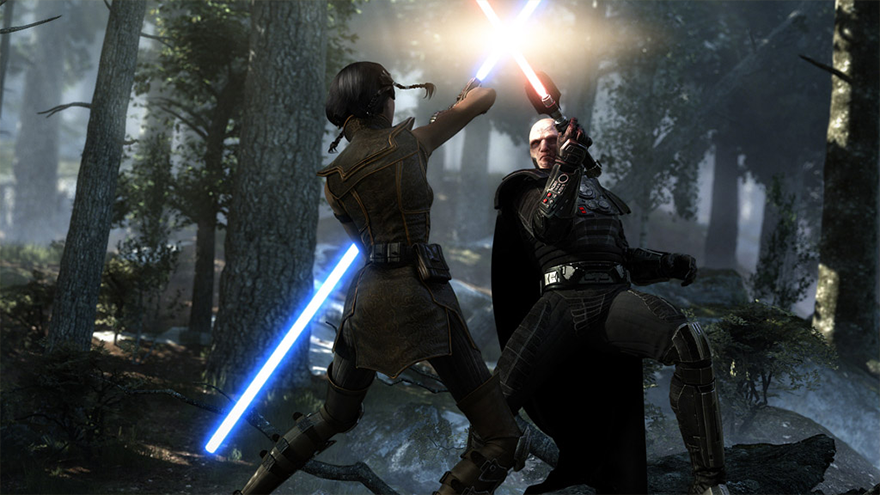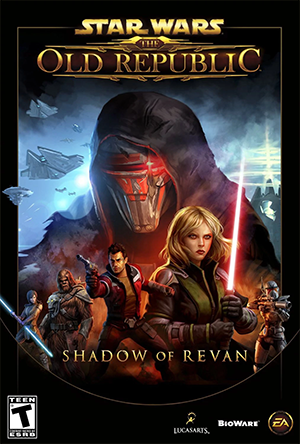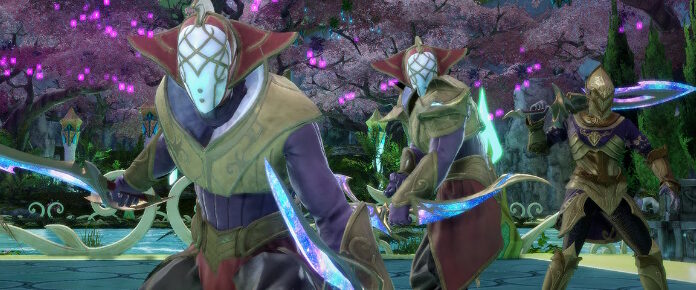
I started writing professionally about SWTOR a year and a half before it launched, so I have been there since the beginning. And although I’ve had my ups and downs with the actual amount of time I spent with the game, I have remained a subscriber and participant in all the activities that the game has to offer. Admittedly, my time in the game as made me a little bit jaded, which is why I have taken some breaks when the content cycle was low. Regardless, I have always stepped back into the game because, at the end of the day, I still believe that it is a good game with an even better community.
Today, in celebration of SWTOR‘s birthday, I would like take a look back to the game’s launch and each of the major stages of the game’s life cycle. I also invite you to talk about your favorite SWTOR moment in the comments.

Early access and launch
As I mentioned above, I have been playing the game since launch, but I also spent quite a bit of time in beta. And my first fond memory of the game itself (not the hype that surrounded it) that I can talk about was playing for one of my very first livestreams. At the time, EA would only allow about 20 minutes of gameplay to be broadcast at a time, and I couldn’t really give away any spoilers about the game story. I did something that no one else was doing: I played the beginning of all eight starting class stories and talked about my experience so far with the game. Livestreaming was rather new in 2011, but I still had hundreds of people watching me play the game. It was both intimidating and exciting.
Officially, I joined the game on the first day of early access. However, I was never one of those people who sped through content. I wanted to enjoy the leveling process, but at the same time, I also wanted to join people in operations (which at the time was just Eternity Vault) and Ilum PvP. So I picked a class story that I wasn’t exactly interested in prior to launch: The Sith Warrior. I figured that I could zoom through that story without paying much attention and hit max level quickly. I was wrong. The Sith Warrior story is one of my favorites, second only to the Imperial Agent, and it took me more than two weeks to actually hit max level.
The launch of the game was very exciting. Everything was fresh, new, and interesting. The storytelling reminded many people of Knights of the Old Republic and other BioWare games. In fact, some classes were accused of being direct rips from existing BioWare games, like Mass Effect. BioWare writers swear that there was no collusion between the BioWare Austin and BioWare Edmonton teams as far as that was concerned.
 Free-to-play and expansions
Free-to-play and expansions
The first year for SWTOR was rough. Players burned through content far faster than BioWare believed they would. And they were very vocal about the issues they were having on the forum and social media. This caused BioWare to quickly look at its business model and change the game to free-to-play very quickly: less than a year after launch. The evidence that it was rushed still lingers today. I’m looking at you, purchasable quickbars. That is still one of the weirdest moves in F2P history. But despite its missteps, SWTOR F2P ushered in a rather prosperous time for the game. I like to call this the Expansion Period.
After F2P, we started to see a rather large influx of content. About every six months for the next couple of years, BioWare introduced us to an expansion of some kind. Although players would question whether additions like Galactic Starfighter and Galactic Strongholds were really worthy of being called expansions, the price point (the cost of a single month of subscription) quieted opponents’ roar to a whimper. Plus, Rise of the Hutt Cartel and Shadow of Revan gave us story, small-group, and large-group activities. There really wasn’t a lot to argue about besides semantics.
Shadow of Revan was also the last expansion that really hit all the marks with fans. We didn’t get a new PvP map with new game rules, but we did get new arenas. Two new flashpoints were introduced for those who like to play in small groups. Raiders received two of the most challenging operations to date. And those who liked the individual class stories received new missions that were focused on class-specific content. Shadow of Revan was the pinnacle of the game post-launch.

A strange turn
In 2015, the developers announced that they “wanted to return to [their] BioWare roots and bring to the forefront what has always made Star Wars: The Old Republic great, which is story.” Of course, this meant wiping the slate clean and creating a story where you practically had to rebuild your character from scratch.
Although many were rightfully skeptical of this whole change, I supported the transition. I believed it would at very least be interesting, if not wildly successful. I am going to guess that it was not wildly successful given that we are now on our third senior producer since the launch of Knights of the Fallen Empire.
The first “Knights of” expansion seemed to really focus on our character gaining new allies while characters like Lana Beniko and Theron Shan researched ways to take down Emperor Arcann from the throne of Zakuul, the Eternal Empire. We didn’t find out until the end of the second “Knights of” expansion that we were actually a pawn in everyone’s game, which turned an interesting story about your character into a drawn-out narrative about Emperor Valkorion’s family.
SWTOR right now
With Valkorion gone from the galaxy, it appears that the everyone is set on taking down the next greatest power: you. Some have chosen to try to side with you while secretly waiting for a moment to stab you in the back, while others have openly turned against you.
I am suspicious of BioWare Austin’s storytelling prowess at this point, but I remain hopeful. I don’t think anyone at BioWare Austin is individually a bad storyteller, but it appears that after six years, resources are beginning to run thin.
I really do hope that SWTOR finds a third wind and continues for many years to come. The current configuration of developers are the most community-minded, and I believe they have the talent to produce some interesting and exciting content.
Good luck, happy birthday, and may the Force be with you, SWTOR, for many more years.














